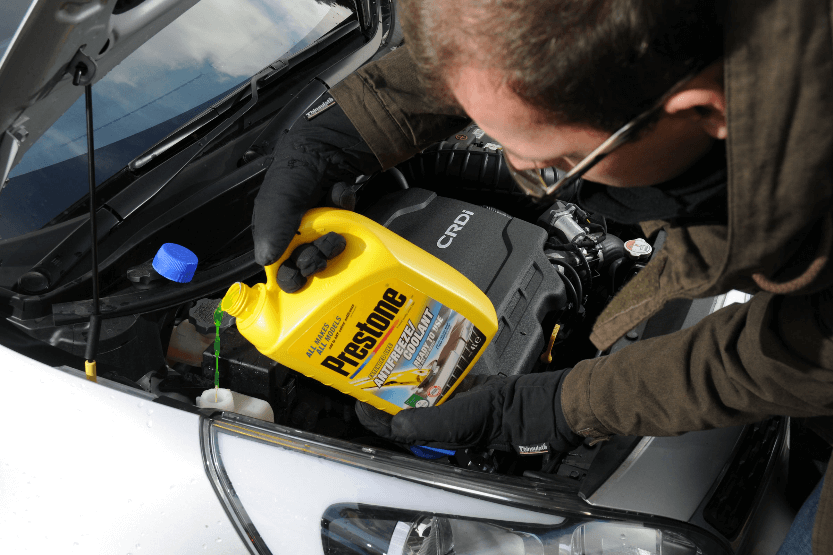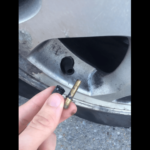When the weather outside turns chilly, there’s nothing quite like the feeling of getting into a warm car. However, if you’re not sure how to turn on your car’s heater, you may find yourself shivering in the driver’s seat.
Luckily, turning on your car’s heater is a simple process that can be accomplished in just a few easy steps.
To start, turn on your car’s engine. The engine generates heat which is then pushed through the vents when you turn on the heater. If you have a key ignition, insert the key and turn it to the “on” position.
If your car has a push-button ignition, press the brake pedal and then press the “engine start” button. Once the engine is running, you’re ready to turn on the heater.
How to Turn On the Car Heater

Turning on the car heater is a simple process that can make a big difference in your driving experience during cold weather. Here are step-by-step instructions to help you turn on the car heater:
- Start the car engine: Whether your car has a key ignition or a push-button ignition, turn on the car engine. The engine generates the heat that gets pushed through your vents when you turn the heater on.
- Adjust the temperature: Look for the temperature controls on your car heater. If your car has a digital temperature display, use the buttons to increase or decrease the temperature to your desired level of warmth. If your car has a single temperature control knob, turning it to the right raises the temperature.
- Adjust the fan speed: The fan speed control is usually located next to the temperature controls. Adjust the fan speed to your desired level of airflow. If you want to warm up the cabin faster, use the recirculation button. This button stops the heating system from pulling in outside air and instead recirculates the cabin air.
- Adjust the heat level: If your car has different heater controls, such as dials or buttons, adjust them to your desired heat level. Some cars have a defrost button that turns on the heater fan at maximum speed to quickly clear foggy windows.
- Enjoy the warmth: Once you have adjusted the temperature, fan speed, and heat level to your desired settings, sit back and enjoy the warmth.
Note that some cars have an automatic system that controls the car heater. In this case, you may not need to adjust the temperature, fan speed, or heat level manually. Simply turn on the car engine and let the automatic system do the work for you.
In summary, turning on the car heater is a simple process that can make a big difference in your driving experience during cold weather. By following these step-by-step instructions, you can adjust the temperature, fan speed, and heat level to your desired settings and enjoy the warmth.
Understanding and Adjusting Air Distribution
When it comes to turning on the car heater, understanding and adjusting air distribution is key to achieving maximum comfort. The air distribution system in a car is responsible for delivering air from the heating and air conditioning system to the cabin of the vehicle.
This system is made up of vents, air direction controls, and distribution mechanisms that work together to provide the right amount of heat or cooling to the cabin.
The air distribution system allows the driver and passengers to adjust the direction and flow of air to different parts of the cabin. The air direction controls are typically located on the dashboard or on the center console.
These controls allow the driver and passengers to adjust the direction of the air to either the floor, dashboard, or windshield. By adjusting the air direction controls, the driver and passengers can direct the flow of air to where they need it most.
In addition to air direction controls, many cars also have fan speed controls. These controls allow the driver and passengers to adjust the speed of the fan that is used to circulate the air throughout the cabin.
By adjusting the fan speed, the driver and passengers can control how quickly the cabin is heated or cooled.
Some cars also have dual climate controls, which allow the driver and front passenger to set different temperatures for their respective sides of the cabin. This feature is especially useful for couples or families who have different temperature preferences.
It’s important to note that the air conditioning system in a car can also affect the air distribution system.
When the air conditioning system is turned on, it can change the flow of air in the cabin. This is because the air conditioning system uses a different set of vents and ducts to deliver cool air to the cabin.
In summary, understanding and adjusting air distribution is an important aspect of turning on the car heater. By using air direction controls, fan speed controls, and dual climate controls (if available), the driver and passengers can achieve maximum comfort while driving.
Troubleshooting Common Car Heater Problems

Car heaters can stop working for a variety of reasons, from electrical problems to clogged heater cores. Here are some common issues that drivers may encounter and how to troubleshoot them:
Low Coolant
Low coolant levels can cause a car’s heater to stop working. The heater core relies on hot coolant to produce heat, so if there isn’t enough coolant in the system, the heater won’t work properly. Drivers should check their coolant levels regularly and top off the reservoir as needed.
Clogged Heater Core
Over time, a car’s heater core can become clogged with dirt and debris, which can prevent hot air from flowing into the cabin. Drivers can try flushing the heater core with water to remove any blockages. If flushing doesn’t work, the heater core may need to be replaced.
Faulty Thermostat
The thermostat regulates the flow of coolant through the engine and heater core. If the thermostat is stuck open or closed, it can prevent the heater from working properly. Drivers can test their thermostat with a diagnostic tool to see if it needs to be replaced.
Electrical Problems
Electrical problems can also cause a car’s heater to stop working. A blown fuse, broken resistor, or faulty blower motor can all prevent the heater from functioning. Drivers should check their fuses and electrical connections to ensure that everything is working properly.
Dirt and Blockages
Dirt and blockages in the heater hoses can also prevent the heater from working. Drivers can inspect their hoses for signs of wear and tear, and replace them if necessary. They can also check for any blockages in the hoses or heater core and clear them out as needed.
Overall, troubleshooting common car heater problems requires a bit of know-how and diagnostic tools.
By checking for low coolant, clogged heater cores, faulty thermostats, electrical problems, and dirt and blockages, drivers can get their heaters working again and improve visibility on cold winter days.
Maintaining and Checking the Heater System
As per Urban Lube (.ca), to ensure the car heater works properly, it is essential to maintain and check the heater system regularly. Here are some tips to keep the heater system in good condition:
- Check the coolant level: The coolant is responsible for transferring heat from the engine to the heater core. Low coolant levels can cause the heater to blow cold air. Check the coolant level regularly and add more if necessary. Refer to the vehicle manual for instructions on how to check the coolant level.
- Check the hoses: The hoses that connect the engine to the heater core can become damaged or clogged over time. Check the hoses for any signs of wear and tear, such as cracks or leaks. Replace any damaged hoses immediately.
- Check the blower motor: The blower motor is responsible for blowing air through the heater core and into the car. If the blower motor is not working properly, the heater will not work. Check the blower motor for any signs of damage or wear and tear. Replace the blower motor if necessary.
- Check the fan speed: The fan speed controls how much air is blown through the heater core and into the car. If the fan speed is too low, the heater will not work properly. Check the fan speed and adjust it if necessary.
- Check the digital display: Some cars have a digital display that shows the temperature and fan speed. If the digital display is not working properly, the heater may not work. Check the digital display for any signs of damage or wear and tear. Replace the digital display if necessary.
- Check the antifreeze level: Antifreeze is added to the coolant to prevent it from freezing in cold weather. Low antifreeze levels can cause the heater to blow cold air. Check the antifreeze level regularly and add more if necessary.
- Check the rear demist: Some cars have a rear demist function that uses the heater to defrost the rear window. If the rear demist is not working properly, the heater may not work. Check the rear demist function and adjust it if necessary.
By following these tips, car owners can maintain and check the heater system to ensure it works properly. Regular maintenance can prevent costly repairs and keep the car warm and comfortable in cold weather.
When to Consult a Certified Mechanic

If the car heater is not turning on, it is essential to know when to consult a certified mechanic. While some issues with the car heater can be fixed at home, some problems require professional assistance.
Certified mechanics have the knowledge and expertise to diagnose and repair car heater issues. They have access to specialized tools and equipment to identify the root cause of the problem and fix it efficiently.
If the car heater is blowing cold air, making strange noises, or emitting an unusual smell, it is time to take it to a certified mechanic. These issues may indicate a more significant problem that requires professional attention.
It is also important to consult a certified mechanic if the car heater is not turning on even after following the troubleshooting steps. Attempting to fix the issue without proper knowledge and experience can lead to further damage and costly repairs.
In addition, if the car heater is not functioning correctly, it can affect the overall performance of the vehicle. A malfunctioning car heater can cause the engine to overheat, leading to engine damage and reduced fuel efficiency.
Therefore, it is recommended to consult a certified mechanic for any car heater issues to ensure the safety and longevity of the vehicle.
Final Thoughts
In conclusion, turning on the car heater is a simple process that can be done in just a few steps. It is important to ensure that the car cabin is properly insulated to prevent heat from escaping. Closing all doors and windows can help with this.
Once the insulation is taken care of, the driver can start the engine and adjust the temperature dial to the desired heat level. It is recommended to wait for the engine to warm up before setting off on a journey. This usually takes around 5 minutes.
If the car heater is blowing cold air, it could be due to low coolant levels or a faulty thermostat. In such cases, it is best to take the car to a mechanic to have it checked out.
Overall, taking care of the car heater is important for a comfortable driving experience during cold weather. By following the steps outlined in this article, drivers can ensure that their car heater is working properly and providing the necessary warmth.









